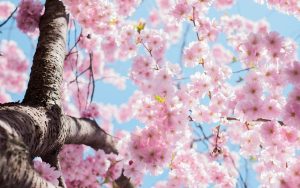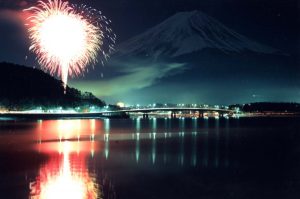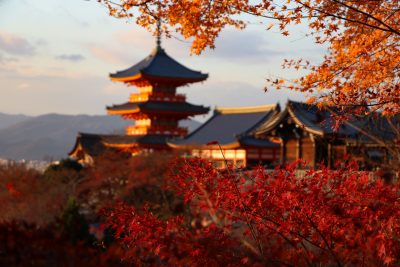Japan is a country with distinct four seasons, each offering its unique beauty during spring, summer, autumn, and winter. For first-time visitors to Japan, it’s essential to understand the weather and plan your outfits accordingly. Many people choose Tokyo as their first destination in Japan, so let’s explore the temperature and humidity throughout the twelve months in Tokyo. How can you dress appropriately to adapt to the local climate?
Below, we’ve compiled the temperature and humidity conditions for each month in Tokyo, along with outfit suggestions and activities for each month. If you’re interested, keep on reading!
Climate Overview of Tokyo Throughout the Year
| Month | Average Temperature (℃) | Highest Temperature (℃) | Lowest Temperature (℃) | Relative Humidity (%) |
|---|---|---|---|---|
| January | 5.4 | 9.8 | 1.2 | 51 |
| February | 6.1 | 10.9 | 2.1 | 52 |
| March | 9.4 | 14.2 | 5.0 | 57 |
| April | 14.3 | 19.4 | 9.8 | 62 |
| May | 18.8 | 23.6 | 14.6 | 68 |
| June | 21.9 | 26.1 | 18.5 | 75 |
| July | 25.7 | 29.9 | 22.4 | 76 |
| August | 26.9 | 31.3 | 23.5 | 74 |
| September | 23.3 | 27.5 | 20.3 | 75 |
| October | 18.0 | 22.0 | 14.8 | 71 |
| November | 12.5 | 16.7 | 8.8 | 64 |
| December | 7.7 | 12.0 | 3.8 | 56 |
Data Source: Japan Meteorological Agency | Past Weather Data Search
Data Range: 1991-2020
Tokyo Year-Round Temperature and Recommended Outfits
January 【Average Temperature: 5.4℃】

【Highest Temperature: 9.8℃】 【Lowest Temperature: 1.2℃】 【Relative Humidity: 51%】
Japan Pocket Wifi Rental
UNLIMTED DATA SIM CARD
Japan Travel Prepaid SIM card
January is the coldest month in Tokyo with an average temperature of only 5.4 degrees Celsius. Although the humidity is relatively low, causing less snowfall, there are occasional short snowfalls in Tokyo. If you happen to encounter snow, it may cause delays in trains and buses, and the weather can become very cold. Therefore, if you choose to travel to Tokyo in January, it is recommended to bring at least one thick coat just in case.
Shopping malls and trains usually have heating, so it is recommended to wear easily removable thick coats. If you are sensitive to the cold, wearing a down jacket is also a good idea.
In early January, there is a “New Year” atmosphere in Tokyo. January 1st is the beginning of the year according to the new calendar. During this time, people visit shrines, have New Year’s family meals, and visit friends and relatives. January 1st to January 3rd is also a holiday for many Japanese people.
February 【Average Temperature: 6.1℃】
【Highest Temperature: 10.9℃】 【Lowest Temperature: 2.1℃】 【Relative Humidity: 52%】

In February, the temperature rises slightly compared to January, but it is still very cold and dry. Similar outfit recommendations as January.
In Japan, most plum blossoms bloom in February, making it a pleasant time to enjoy plum blossoms.
Originally, February had only one public holiday (known as a “red day” in Japan, marked in red on the calendar). However, since the enthronement of the new Emperor in 2019, February 23rd, the birthday of the new Emperor, has become an official holiday every year.
March 【Average Temperature: 9.4℃】

【Highest Temperature: 14.2℃】 【Lowest Temperature: 5.0℃】 【Relative Humidity: 57%】
In March, you can feel some signs of spring. With rising temperatures, cherry blossoms start blooming from south to north across Japan. Cherry blossom viewing events are abundant in March.
According to past data, cherry blossoms in Tokyo are expected to be in full bloom around March 18th to March 26th. If you plan to see cherry blossoms in Tokyo, this period is ideal.
As for clothing, you can consider removing down jackets in March, but the lowest temperature is still below 10 degrees, so it is recommended to wear warmer outfits.
April 【Average Temperature: 14.3℃】

【Highest Temperature: 19.4℃】 【Lowest Temperature: 9.8℃】 【Relative Humidity: 62%】
April in Tokyo has a significant temperature difference, with warm days and cooler evenings. If you plan to spend the whole day outdoors, it is recommended to bring a medium-thickness coat in your bag for warmth in the evening.
During the day, wearing two layers of clothing is usually enough, such as a medium-thickness long-sleeved T-shirt with a wind-resistant denim jacket. Adding an inner layer inside a thick shirt is also sufficient for Tokyo’s April weather.
For Japanese people, April marks the start of the school and fiscal year. Many students and employees start their new academic and work year on April 1st. In early April, cherry blossoms in Tokyo have not yet fallen and form a beautiful scene known as “sakura snow” as the white and pink petals flutter in the spring breeze.
May 【Average Temperature: 18.8℃】

【Highest Temperature: 23.6℃】 【Lowest Temperature: 14.6℃】 【Relative Humidity: 68%】
May in Tokyo has a relatively large temperature difference. The daytime temperature can reach around 22-25 degrees Celsius, which is very warm, but the evenings are cooler, with temperatures around 14-16 degrees Celsius. Therefore, even though a shirt-thick outfit is sufficient during the day, it’s better to have a jacket on hand if you plan to stay outdoors until the evening.
May is also the time of Japan’s Golden Week, which lasts about 8 days from April 29th to May 6th, with some variations depending on the year’s dates and days of the week. During this period, many Japanese people choose to visit relatives, friends, or travel, resulting in crowded streets and popular tourist spots. Hotels and restaurants may also be difficult to book. If possible, it is recommended to avoid traveling to Japan during this time.
June 【Average Temperature: 21.9℃】

【Highest Temperature: 26.1℃】 【Lowest Temperature: 18.5℃】 【Relative Humidity: 75%】
In the past, June in Japan used to be relatively cool, with the highest temperature not exceeding 27 degrees Celsius. However, due to the onset of the rainy season, it becomes relatively humid, which may make it feel a bit hotter. However, in recent years, Japan’s scorching heat has arrived much earlier. By mid to late June, many places have already surpassed 30 degrees. In 2022 and 2023, Tokyo’s temperature reached around 34 degrees in June. With the high humidity brought by the rainy season, the heat index can even reach 37 to 40 degrees. So, if you’re visiting Tokyo in mid to late June, remember to prepare for sun protection and heatstroke prevention.
June is a good time to see hydrangeas. You can find blooming hydrangeas everywhere, whether in parks or along the streets. If it happens to drizzle, it adds a special charm to the scenery.
July 【Average Temperature: 25.7℃】

【Highest Temperature: 29.9℃】 【Lowest Temperature: 22.4℃】 【Relative Humidity: 76%】
In July, Tokyo starts to feel the scorching heat of summer.
Although the temperature may not seem high, the 76% humidity can significantly increase the perceived temperature. If the thermometer shows 29 degrees, people may feel like it’s actually 35 degrees.
Even though it’s already summer, if you plan to spend the whole day outdoors, such as sightseeing, it is recommended to wear long sleeves and long pants. Women can wear long skirts instead of summer shorts. Also, remember to prepare for sun protection, such as using a sun umbrella and applying sunscreen. The sun in Japan during summer is stronger than you might imagine, and staying exposed to the July sun in shorts and short sleeves all day may result in sunburn.
In July, various places in Japan hold fireworks festivals. For example, the Sumida River Fireworks Festival, held at the end of July, is one of Tokyo’s two major fireworks festivals and is definitely worth seeing.
August 【Average Temperature: 26.9℃】

【Highest Temperature: 31.3℃】 【Lowest Temperature: 23.5℃】 【Relative Humidity: 74%】
August is the hottest season in Tokyo throughout the year, with high temperatures accompanied by high humidity, making the heat even more unbearable. Regarding clothing, it is recommended to wear light, breathable, and sweat-absorbing clothes. If you go sightseeing during the day, pay attention to sun protection, use a sun umbrella, wear sun-protective clothing, and sunscreen—all are essential. The hot climate can make you sweat easily, so remember to stay hydrated and replenish salt.
In August, various places in Japan hold many fireworks festivals and festivals. If your itinerary allows for travel beyond Tokyo, you might explore neighboring prefectures and collect some new travel memories.
Additionally, August is also the peak season for typhoons in Japan. Typhoons may lead to transportation disruptions and delays, so be sure to allocate sufficient time when planning your schedule.
September 【Average Temperature: 23.3℃】

【Highest Temperature: 27.5℃】 【Lowest Temperature: 20.3℃】 【Relative Humidity: 75%】
In September, Tokyo enters a refreshing autumn season, and the weather starts to cool down. Sometimes, there might be a notable temperature difference between mornings and evenings. People who are more sensitive to heat might still wear short sleeves, while others who feel colder may have already switched to long sleeves. It is suggested to bring a lightweight, long-sleeved outerwear to keep warm when needed and against the autumn breeze.
September hosts Japan’s Mid-Autumn Festival, “Jugoya.” Besides enjoying traditional rice dumplings called “Tsukimi Dango,” major businesses also introduce moon-themed products and foods during this time. For example, Japan McDonald’s offers limited-time Moon-Viewing Burgers during this season.
October 【Average Temperature: 18.0℃】

【Highest Temperature: 22.0℃】 【Lowest Temperature: 14.8℃】 【Relative Humidity: 71%】
As time moves to October, the temperature in Tokyo starts to noticeably drop, and people mostly switch to long-sleeved clothing. For morning and evening outings, you might need an additional coat for warmth.
October marks the beginning of Japan’s autumn foliage season, and various places start organizing maple leaf viewing events. Additionally, at the end of the month, Halloween festivities take place at the famous Shibuya Scramble Crossing, where people dress up as anime characters, monsters, animals, etc., creating a lively atmosphere. However, due to the large number of people, although the police maintain order, if you attend in person, remember to prioritize your safety.
November 【Average Temperature: 12.5℃】

【Highest Temperature: 16.7℃】 【Lowest Temperature: 8.8℃】 【Relative Humidity: 64%】
In November, Tokyo slowly enters the winter season, and with decreasing temperatures, warm clothing becomes the norm. It is advisable to wear thicker long sleeves and long pants, and if necessary, bring along a windproof coat.
Japan’s autumn foliage reaches its peak in this month. From late October to early November, places like Lake Kawaguchi near Mount Fuji hold autumn foliage festivals, where you can admire a tunnel of colorful leaves and the beautiful reflection of Mount Fuji in the water. Additionally, within Tokyo city, you can enjoy the golden yellow ginkgo trees.
December 【Average Temperature: 7.7℃】

【Highest Temperature: 12.0℃】 【Lowest Temperature: 3.8℃】 【Relative Humidity: 56%】
In December, Tokyo officially enters winter, with an average temperature dropping below 10 degrees Celsius. If you visit Tokyo during this time, it’s best to wear warm clothes such as winter jackets or down coats, as Tokyo’s winter is not rainy or snowy but rather a bit dry. Remember to keep your skin hydrated.
From late November to early December, Tokyo hosts various illumination events. Areas around Shibuya, Ginza, Marunouchi, Roppongi, and more will be adorned with beautiful light displays.
The Best Time to Travel to Tokyo

Tokyo is a city with distinct seasons throughout the year.
In spring, from March to April, there are cherry blossoms in full bloom. In summer, during July and August, you can enjoy fireworks festivals. In autumn, from September to October, the city is adorned with beautiful autumn foliage. And in winter, from December to January, you can experience the dazzling illumination festivals.
Therefore, no matter when you visit Tokyo, you will encounter its beauty in different seasons. Don’t be fixated on a particular time, but rather explore and appreciate the charm of Tokyo as it unfolds before you.

GetAround Japan is your number one travel guide, providing the latest information on visiting and living in Japan, with tips on what to eat, things to do, and places to stay.
Whether you’re planning for a trip far in the future, or already in Japan in need of some fresh ideas, our archive of posts will help you find the best way to fill your time and get the most out of your travel experience.
We provide you updates on serious policies that affect visitors and foreign residents while also keeping things light and fun with articles on quirky trends and pop culture.
How do we know how to provide visitors the information they need? Our affiliate company CDJapan Rental provides WIFI and Sim Card rentals to thousands of visitors to Japan every year. In other words, we are constantly in touch with and listening to the voices of our customers, and infuse our blog with the information they ask us for.
For inquiries, contact us here
=Company Information=
CDJapan Rental (Neowing Corporation) 1-10-15-3F Nihonbashi Horidome Chuo, Tokyo 103-0012, Japan
Japan Pocket Wifi Rental
UNLIMTED DATA SIM CARD
Japan Travel Prepaid SIM card




